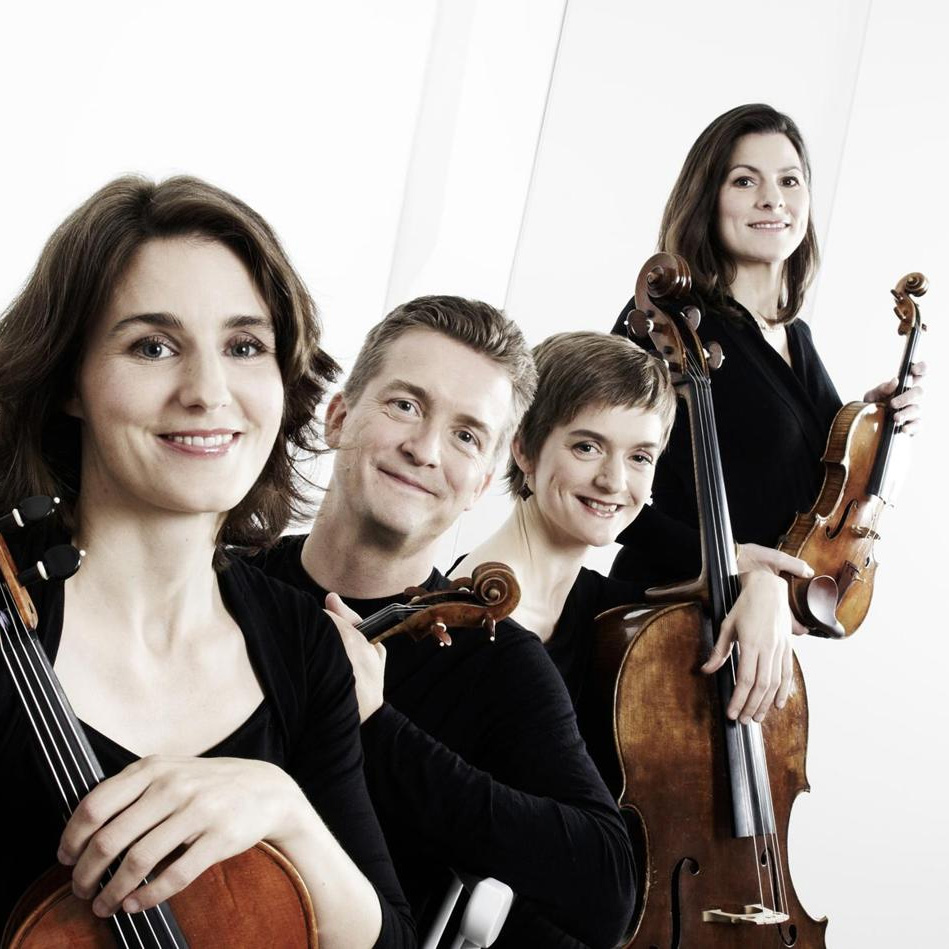by Daniel Hathaway

Unlike most standing string quartets, the Tetzlaff Quartet — which includes second violinist Elisabeth Kufferath, violist Hanna Weinmeister, and cellist Tanja Tetzlaff — only gets together a few times each year to rehearse and tour together. So completely do they agree on their interpretation and so polished are their performances, you’d never suspect that they weren’t rehearsing and playing together 24/7/365.
One factor that may help contribute to the Quartet’s overall sheen and unanimity is that the ensemble’s violins and viola are the work of a single maker, German luthier Stefan-Peter Greiner, who currently plies his trade in Hampstead, London — but doesn’t make cellos. Although the four musicians achieved a vast range of color and timbre on Tuesday in music by Mozart, Berg, and Schubert, overall the upper strings sounded more mellow and — forgive the phrase — less high-strung than most violins and violas, old or new.
Beginning with Mozart’s E-flat Quartet, K. 428 — one of the six “Haydn Quartets” from 1783 — the Tetzlaff impressed with their treatment of the opening unison melody, and their ability to achieve both a sense of tension and relaxation.
Alban Berg’s String Quartet, Op. 3, dates from 1910, an emotionally charged period in the composer’s life. The Tetzlaff traded Berg’s musical gestures elastically and observed all the composer’s quirky markings, lucidly putting the work across.
Returning to one of the first pieces they learned as a quartet, the Tetzlaff ended their concert with Schubert’s great Quartet No. 15 in G, dating from 1826. Here the ensemble achieved the greatest range of sounds and colors of the evening. Visiting the whole continuum between lean and warm, they used vibrato sparingly — and in high passages used none at all, lending an eerie sheen to their sound.
Pointing up Schubert’s vacillations between the major and minor forms of his opening tonality as a real structural device, the Quartet managed to bring the dynamic shifts of the first movement, the turbulence of the second, the charm of the scherzo, and the persistence of the fourth-movement tarantella under one roof.
Basking in a warm ovation for its debut in Cleveland, the Tetzlaff Quartet gave the audience a luminous extra: a buoyantly expressive performance of the Cavatina from Beethoven’s Op. 130.
Published on ClevelandClassical.com November 24, 2017.
Click here for a printable copy of this article



